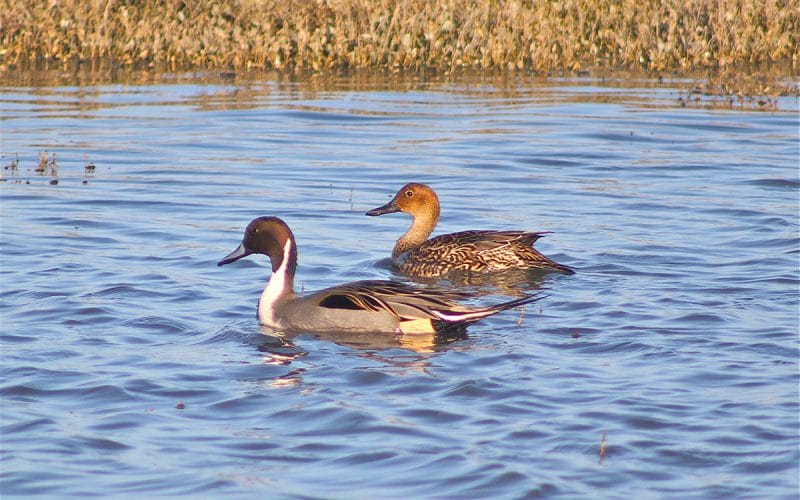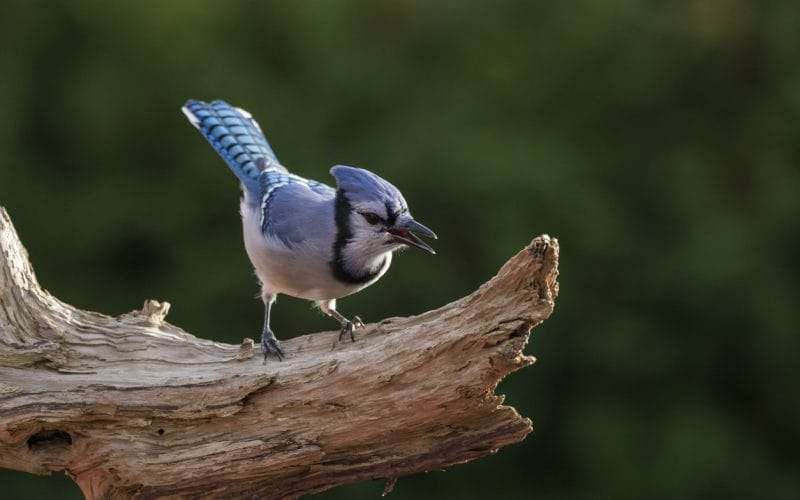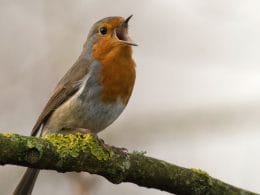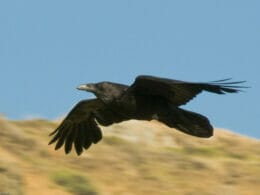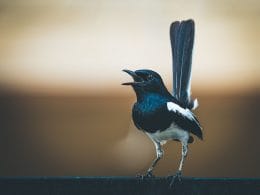I often find myself wondering why birds constantly nest behind my outdoor speakers.
Is it because it’s warm and comfortable back there? Do the birds, perhaps, love the vibrations the speakers cause? Or maybe they’re just fond of the smooth jazz that plays on the speakers. After all, who could resist Charlie Parker’s alto saxophone? Not me, and neither the birds, it seems!
Regardless of the reason, the birds are here to stay. Even after I remove the nests, I see a new one a week later. That made me wonder, is there a way to “nest-proof” outdoor speakers?
After hours of research and countless trial-and-error attempts, I’ve finally found several effective ways to keep birds of any species away from my stereos.
If you’re facing similar issues, here’s how to keep birds from nesting on outdoor speakers.
Scare Them Off with Predators
Birds—and most other prey animals—are deathly afraid of predators. Who can blame them? They’re large, they’re powerful, and, most importantly, they’re ruthless. Use this knowledge against the birds nesting behind your outdoor speakers.
You probably don’t want real-life predators roaming your yard, so go for the next best thing: fake predators.
Strategically place lifelike figures of owls, falcons, hawks, and other pseudo-avian predators in your yard, preferably close to the nesting site.
Author Note: You can also hang several plastic snakes in and around the speakers to dissuade them from nesting in the same area.
Keep in mind that birds are intelligent creatures. If you keep the fake predators in one place, they’ll eventually realize they’re not real. They might even turn the statues into a comfortable perch. You definitely don’t want that.
To avoid this, move the figures around your yard so they’ll appear more life-like. This prevents the birds from catching on to your trick. You can also tie the figures to a rope so they sway and move, making them look like they’re flying.
If you’re dealing with a particularly nasty bird infestation, inflatable tube men work like wonders. I know what you’re thinking: those things are kind of ugly, though. To be honest, I agree.
But although they’re not the most aesthetically pleasing, they’re extremely effective. Birds won’t dare cross the huge dancing creature whipping their appendages around all day.
Set Up Barriers

Needless to say, birds can’t nest on or behind your outdoor speakers if they can’t get to them. Install mesh bird netting, window screens, or protective covers around your speakers. This will create a physical barrier that prevents birds from landing or building nests on the affected area.
Make sure the covers aren’t made of solid glass or metal; you don’t want to block the sounds coming from your speakers, after all!
There are tons of bird barriers on the market, but I personally recommend the De-Bird Heavy Duty Bird Netting. It’s extra thick and easy to use. Plus, it won’t ruin the overall “look” of your yard because it’s practically invisible when installed.
Apart from the speakers themselves, the netting can be used to keep your plants, flowers, and vegetables safe from birds without hindering their growth.
Trick Them With Noise
This technique is one of my favorites, simply because it’s so easy to execute. Here, you’ll simply need to play recordings of predatory birds or birds in distress from your speakers. Doing so will not only frighten the birds but also dissuade them from coming back.
Top Tip: If you value your peace and quiet, or if you simply can’t stand the continuous squawk of birds in distress, use wind chimes instead.
From my experience, wind chimes aren’t as effective as noise recordings. Maybe I wasn’t using enough wind chimes, or maybe I wasn’t using the right ones. But if you have them available, it certainly won’t hurt to try.
This trick is especially effective when paired with fake predatory birds as it makes the illusion even more believable.
Please note that this technique only works after you’ve removed the nest from behind your outdoor speakers.
Alternatively, Ultrasonic Bird Repellers
High-frequency, ultrasonic sounds work just as well as the above-mentioned method. In theory, ultrasonic birds repellers generate high-frequency noise that birds find intolerable. I say “in theory” because there’s no scientific evidence that backs up such claims.
However, they do seem to work. You can actually find ultrasonic noise recordings on YouTube, so give it a go and play it on your speakers.
You can also find commercial ultrasonic bird repellers powered by batteries in Home Depot and online. These devices work with multiple pest birds, as well as rodents and some insects.
Use Anti-Bird Spikes

Anti-bird spikes aren’t for everyone because of two reasons. One, they aren’t aesthetically pleasing. Two, they may accidentally hurt a bird.
Those two reasons aside, anti-bird spikes are actually pretty effective. They act as visual and physical barriers, deterring birds from landing on the nesting site they infiltrated.
These tools are available in two material options: plastic and metal. Compared to stainless steel, plastic (especially those made from polycarbonate), are cheaper and more durable.
Author Note: Stainless steel, on the other hand, is slightly less visible against buildings because they’re thinner. Also, most stainless-steel bird spikes come with a warranty.
Anti-bird spikes are particularly effective against pigeons and other similar-sized birds. Since they come in strips of spikes that can either be glued or screwed on the surface, simply stick or install them on your outdoor speakers and let them do their magic.
In less than a day, you’ll notice birds flying away from the area.
Shiny Objects to the Rescue
Birds don’t like shiny objects. To them, it’s unfamiliar and scary. No one really knows why that is. Some theories suggest that birds are scared of their own reflection, while others believe the shiny reflection hurts their eyes.
Here’s what we know for sure: shiny objects are great deterrents for problematic birds.
Hang reflective tape, CDs, tin foil, aluminum, small mirrors, and similar items near or around your outdoor speakers. When hit with sunlight, the shine emitted from these objects will frighten, confuse, or annoy the birds, forcing them to nest away from your outdoor speakers.
Apply a Surface Repeller
Repellent gels and liquids prevent birds from nesting or perching on solid surfaces due to their tacky and uncomfortable texture.
Upon application, the product will remain effective for 2-12 months. Since they’re usually transparent in color, you don’t have to worry about ugly stains when applied to the speakers.
Most surface repellents are non-poisonous and non-harmful. However, they can damage clothes and irritate human skin if not immediately washed.
If you’re not fond of commercial repellers or simply don’t trust them, natural repellers work just as well.
For instance, you can sprinkle baking soda on your speakers to keep them at bay. Birds hate the texture of baking soda, so once they step on it, they’ll fly away. You can also use double-sided duct tape.
Alternatively, you can make a homemade bird repellent spray by mixing water with apple cider vinegar and chili pepper. Pour the mixture in a spray bottle and spray the affected area.
Birds find the smell offensive, so they’ll likely fly away once they realize something smells off in their favorite nesting site.
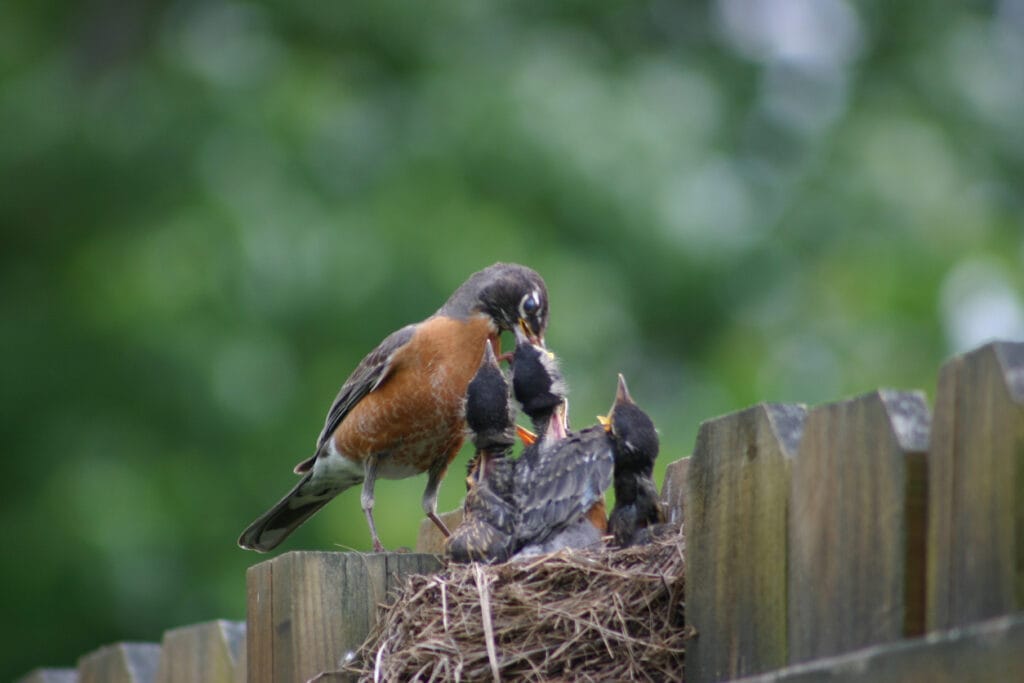
FAQs
Are anti-bird spikes inhumane?
Some people believe bird spikes hurt birds. But this isn’t the case at all. Bird spikes aren’t only safe but often environmentally friendly.
The “spikes” aren’t really spikes at all; they’re dull, somewhat flexible tips that don’t cause any harm when a bird lands on them. They’re uncomfortable at worst.
With that said, always use commercially made bird-spikes. Manufacturers follow a set of legal requirements when making the product to make sure they don’t actually hurt birds. Don’t try to make one yourself.
Are homemade bird repellents poisonous to birds?
It depends on the repellent. The homemade repellent mentioned above, made of a mixture of apple cider vinegar, chili flakes, and water, isn’t poisonous to birds.
However, onions, garlic, salt, birds, and insecticides are harmful—and even deadly—to birds. Avoid these household items when deterring birds.
Are bird nests dangerous?
Yes, bird nests can be dangerous to humans. Nests contain bird droppings and all sorts of nasty bacteria. Moreover, they often contain pathogens, like histoplasmosis and enterococcus, both of which are harmful to humans.
Apart from the potential health issues they may cause, nesting birds can actually physically damage your home. Bird droppings, for instance, can corrode concrete and metal. Feathers can clog gutters and drains. You definitely don’t want birds nesting in or around your home.
Wrapping Up
This marks the end of this article. As you can see, there are multiple ways to keep birds from nesting on your outdoor speakers. If one method doesn’t work, try another. I’m sure at least one will work in your favor.
Professional help works just as well, too, so if you’re facing a particularly severe bird infestation, consider reaching out to your local pest control.
We hope you enjoyed this guide on how to keep birds from nesting on outdoor speakers.
Good luck!





